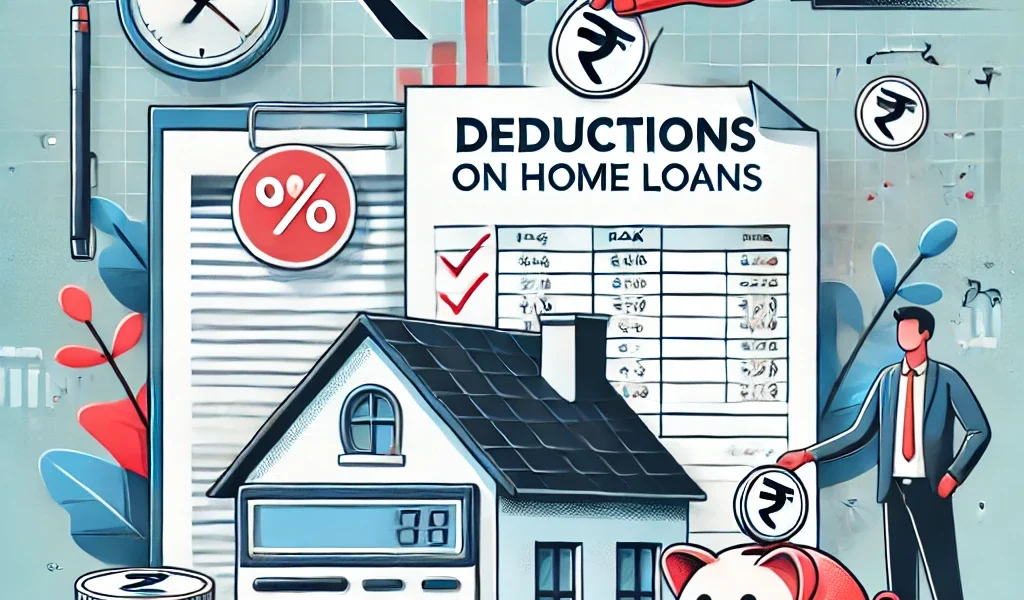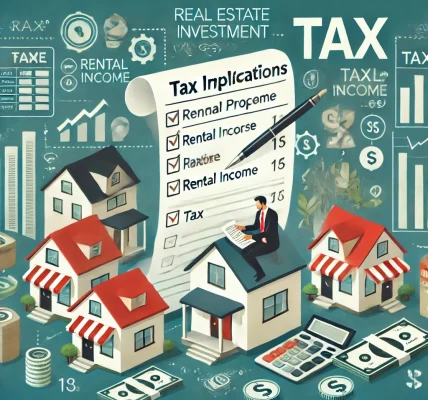Introduction
Buying a home is one of the most significant financial investments, and to encourage homeownership, the Indian government offers various tax benefits on home loans. These benefits can help taxpayers save a substantial amount of money if utilized correctly. In this guide, we will break down the different sections of the Income Tax Act under which deductions can be claimed and provide smart strategies to maximize your savings.
1. Understanding Tax Benefits on Home Loans
A home loan consists of two primary components:
- Principal Amount: The original amount borrowed from the lender.
- Interest Amount: The cost of borrowing the loan, paid as interest.
The tax deductions on home loans are available on both these components under different sections of the Income Tax Act.
2. Tax Deductions Available on Home Loans
2.1 Section 80C – Deduction on Principal Repayment
- Maximum deduction: ₹1.5 lakh per financial year.
- Eligible on repayment of the principal amount of a home loan.
- Only applicable for self-occupied or rented properties.
- The property must not be sold within 5 years of purchase; otherwise, deductions claimed will be reversed.
- Stamp duty and registration charges can also be claimed under Section 80C (subject to the ₹1.5 lakh limit).
2.2 Section 24(b) – Deduction on Interest Paid
- Maximum deduction: ₹2 lakh per financial year.
- The deduction applies to the interest paid on the home loan.
- Available for self-occupied homes.
- If the house is let out (rented), there is no upper limit on interest deduction.
- The loan must be taken for the purchase or construction of a house, and construction should be completed within 5 years.
2.3 Section 80EE – Additional Deduction for First-Time Homebuyers
- Maximum deduction: ₹50,000 per financial year.
- This is over and above the limits under Sections 80C and 24(b).
- Conditions:
- The loan must be sanctioned between April 1, 2016, and March 31, 2017.
- The loan amount should not exceed ₹35 lakh, and the property value should not exceed ₹50 lakh.
- The taxpayer should not own any other residential property at the time of loan sanction.
2.4 Section 80EEA – Additional Deduction for Affordable Housing
- Maximum deduction: ₹1.5 lakh per financial year.
- Available for first-time homebuyers who have taken loans under the affordable housing scheme.
- Conditions:
- Loan must be sanctioned between April 1, 2019, and March 31, 2022.
- The property’s stamp duty value must not exceed ₹45 lakh.
- The taxpayer should not be claiming benefits under Section 80EE.
3. How to Claim Tax Deductions on Home Loans Smartly
3.1 Choose the Right Loan Tenure
- A longer tenure results in lower EMI payments but higher interest paid, leading to higher deductions under Section 24(b).
- If affordability permits, opt for a shorter loan tenure to reduce overall interest payments.
3.2 Maximize Joint Home Loans
- If you take a joint home loan (with a spouse or family member), both co-borrowers can claim deductions separately.
- Each borrower can claim:
- ₹1.5 lakh under Section 80C.
- ₹2 lakh under Section 24(b).
- This effectively doubles the tax benefit for the family.
3.3 Ensure Timely EMI Payments
- Deductions can only be claimed if EMIs are paid on time.
- Missed payments mean you cannot claim the deduction for that period.
3.4 Utilize Pre-EMI Interest Deduction
- If you have purchased an under-construction property, interest paid during the construction period can be claimed in five equal installments after the construction is completed.
- This is available under Section 24(b), up to ₹2 lakh per year.
3.5 Optimize Deductions Based on Usage of Property
- If the house is self-occupied, the maximum deduction on interest is ₹2 lakh.
- If the house is rented out, there is no upper limit on interest deduction (except for a net loss cap of ₹2 lakh per year).
- Declaring the property as rented (even if not physically rented) can allow higher tax savings.
3.6 Take Advantage of Affordable Housing Benefits
- If your property qualifies under the affordable housing category, you can claim Section 80EEA benefits of ₹1.5 lakh, in addition to Section 80C and Section 24(b).
- This allows a total deduction of ₹5 lakh per year (₹1.5 lakh + ₹2 lakh + ₹1.5 lakh).
3.7 Balance Between HRA and Home Loan Benefits
- If you are living in a rented house while also owning another house, you can claim both:
- House Rent Allowance (HRA) deduction for rent paid.
- Home loan interest deduction for the owned house.
4. Documents Required to Claim Home Loan Tax Benefits
To successfully claim tax deductions, ensure you have the following documents:
- Loan sanction letter from the bank or financial institution.
- EMI payment receipts or statement from the lender.
- Certificate of interest paid from the lender.
- Stamp duty and registration payment receipts (for Section 80C claims).
- Construction completion certificate (if applicable).
5. Conclusion
Smartly claiming tax deductions on home loans can help you save a significant amount of money every year. By understanding the available sections of the Income Tax Act and implementing strategies like joint loans, utilizing pre-EMI interest, and optimizing HRA claims, you can maximize your tax benefits while effectively managing your home loan repayment.
Key Takeaways:
✔ Principal repayment is deductible under Section 80C (₹1.5 lakh). ✔ Interest paid is deductible under Section 24(b) (₹2 lakh for self-occupied homes, unlimited for rented homes). ✔ First-time homebuyers get extra deductions under Sections 80EE and 80EEA. ✔ Joint home loans can double tax benefits. ✔ Planning tenure, ownership, and property use can optimize tax savings.




